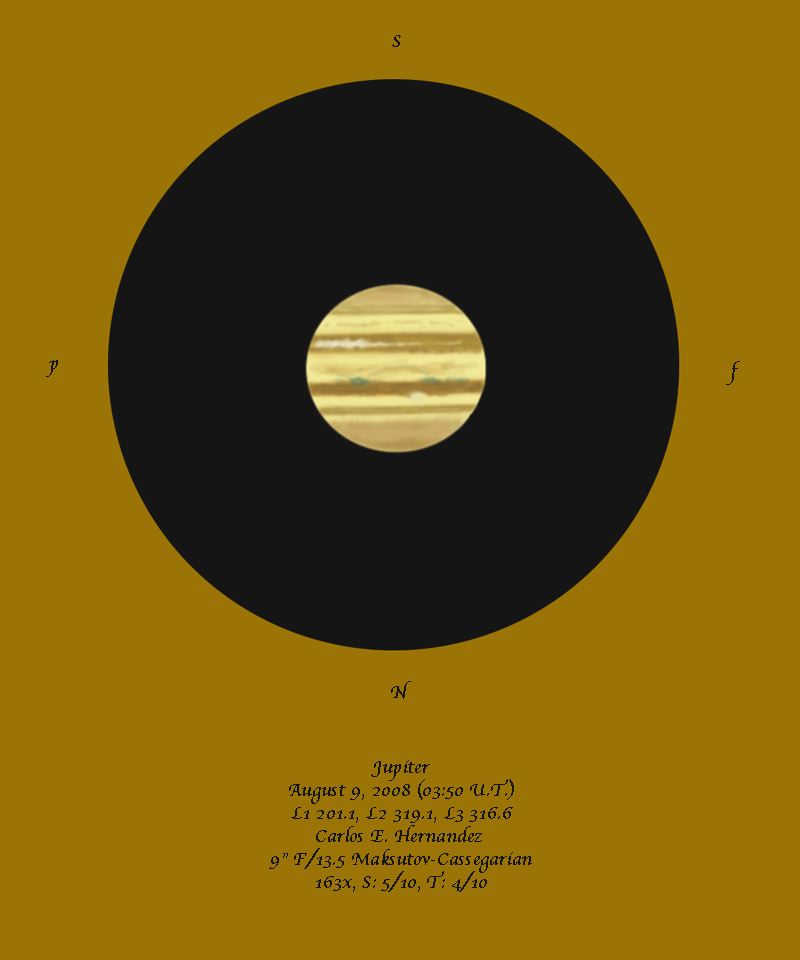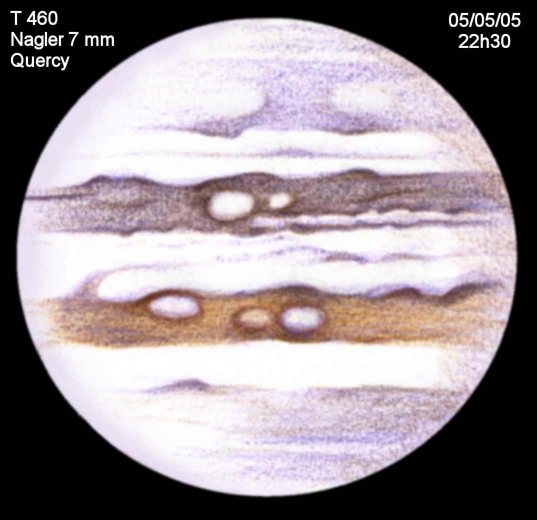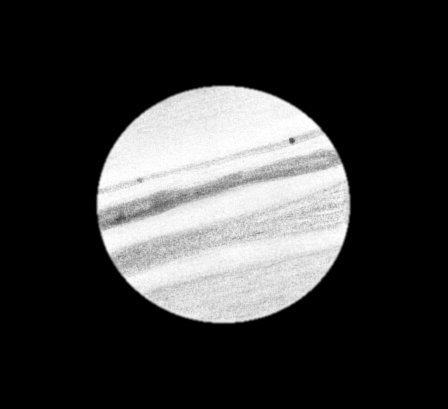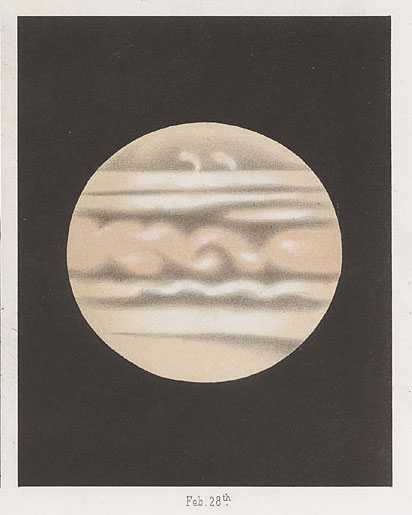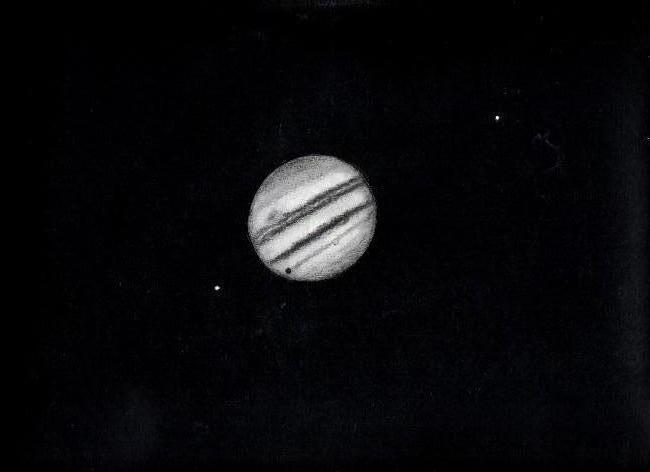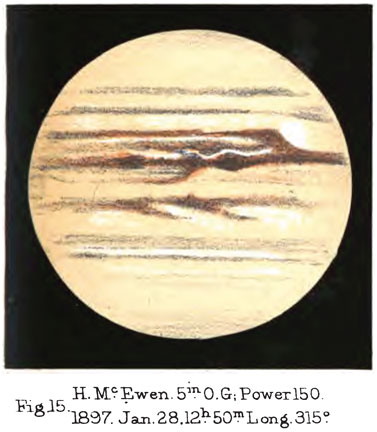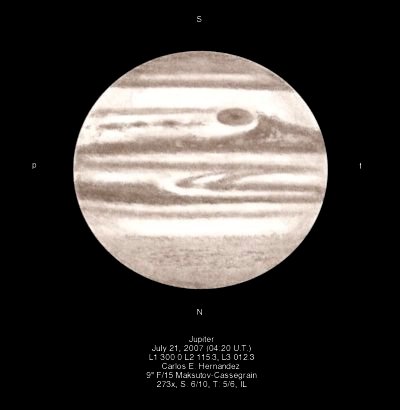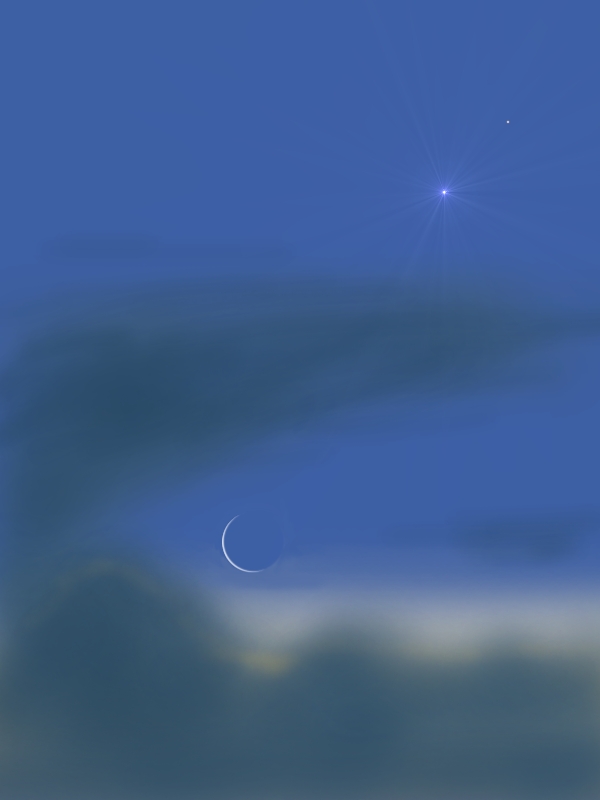Jupiter – August 9, 2008
Sketch and Details by Carlos Hernandez
I made an observation of Jupiter on August 9, 2008 using my 9-inch F/13.5 Maksutov-Cassegrain. Much detail was noted over the planet, especially the North Equatorial Belt (NEB) and South Equatorial Belt (SEB). The seeing conditions were above average (5/10) for a short time before the clouds came in and ended my observing session. I welcome any comments that you may have on my observation.
Date (U.T.): August 9, 2008
Time (U.T.): 03:50
L1 201.1, L2 319.1, L3 316.6
Diameter (Equatorial): 46.4″
Instrument: 9-inch (23-cm) F/13.5 Maksutov-Cassegrain
Magnification: 163x
Seeing (1-10): 5, Antoniadi (I-V): III
Transparency (1-6): 4
Notes:
South Polar Region (SPR): Appears dark to dusky (3-4) and mottled.
South Temperate Zone (STZ): Appears thin and shaded (6/10).
South Temperate Belt (STB): Appears dark to dusky (3-4/10), thin and divided (northern component darker than southern). No ovals visible within it.
South Tropical Zone STrZ): Appears bright (7/10) with a thin, dusky (4/10) band over it’s central portion.
South Equatorial Belt (SEB): Appeared dark to dusky (3-4) and containing dark (3/10) dark condensations along it’s northern border and bright (7/10) undulating sections (strips) within it (preceding section wider in latitude than following).
Equatorial Zone (EZ): Appeared shaded to bright (6-7/10) with a thin, dusky (4/10) band across the center of it.
North Equatorial Belt (NEB): Appeared dark to dusky (3-4/10) and thin with dark rods (barges) along it’s northern border. Blue festoons (3/10) noted along it’s southern border.
North Tropical Zone (NTrZ): Appeared bright (7/10), but no other detail visible within it.
North Temperate Belt (NTB): Appeared thin, dark to dusky (3-4/10) and divided by a thin, bright (7/10) zone.
North Polar Region (NPR): Appeared dark to dusky (3-4/10) and mottled.
A digital image made using Photoshop CS3.
The best of luck in your own observations of Jupiter.
Regards,
Carlos

